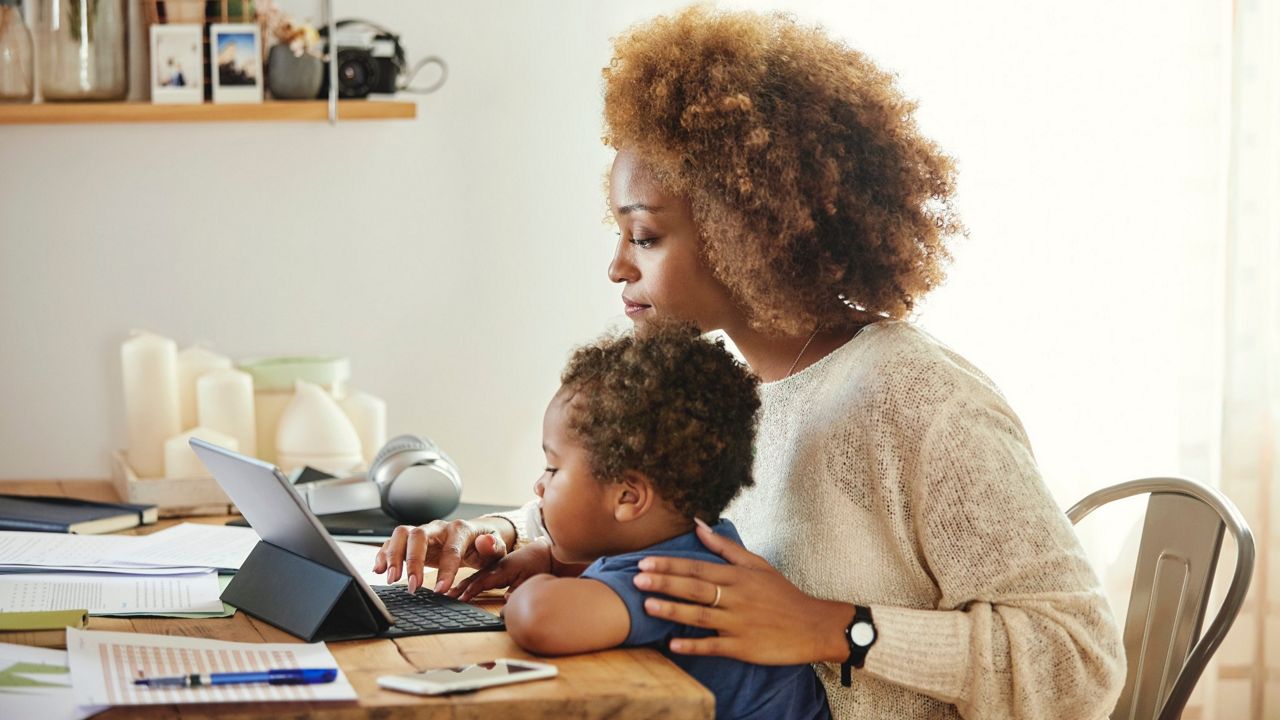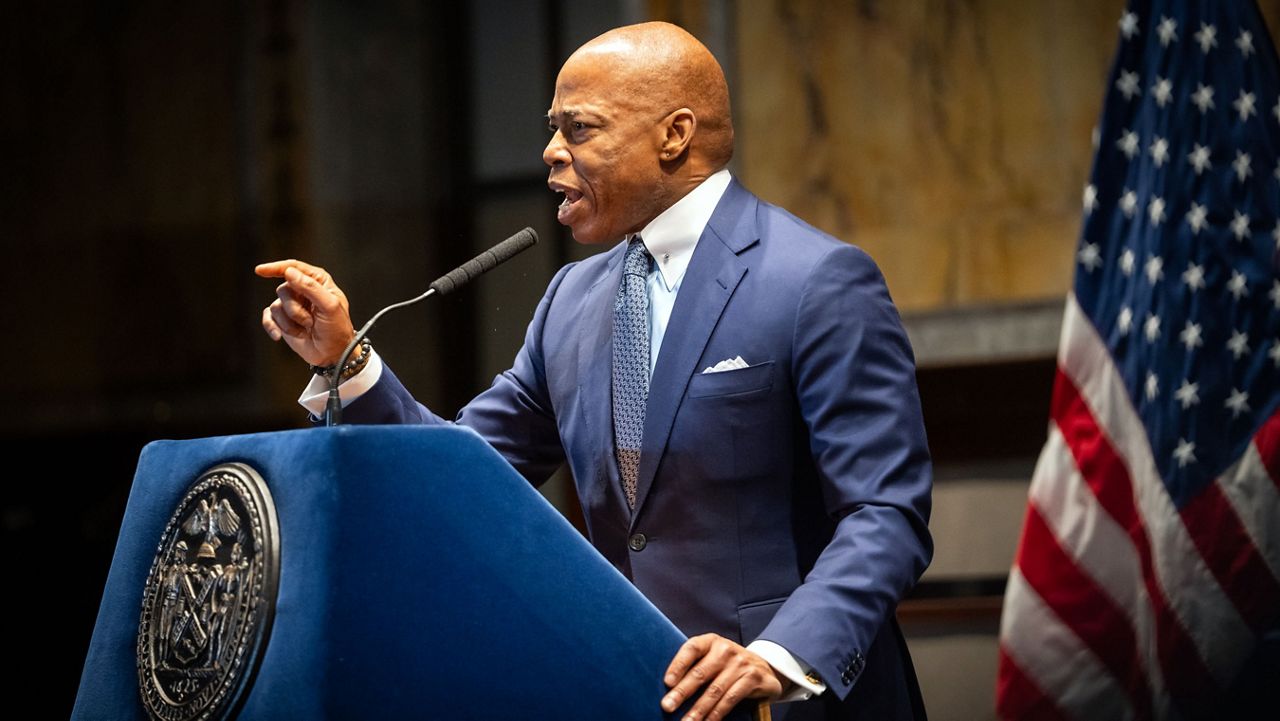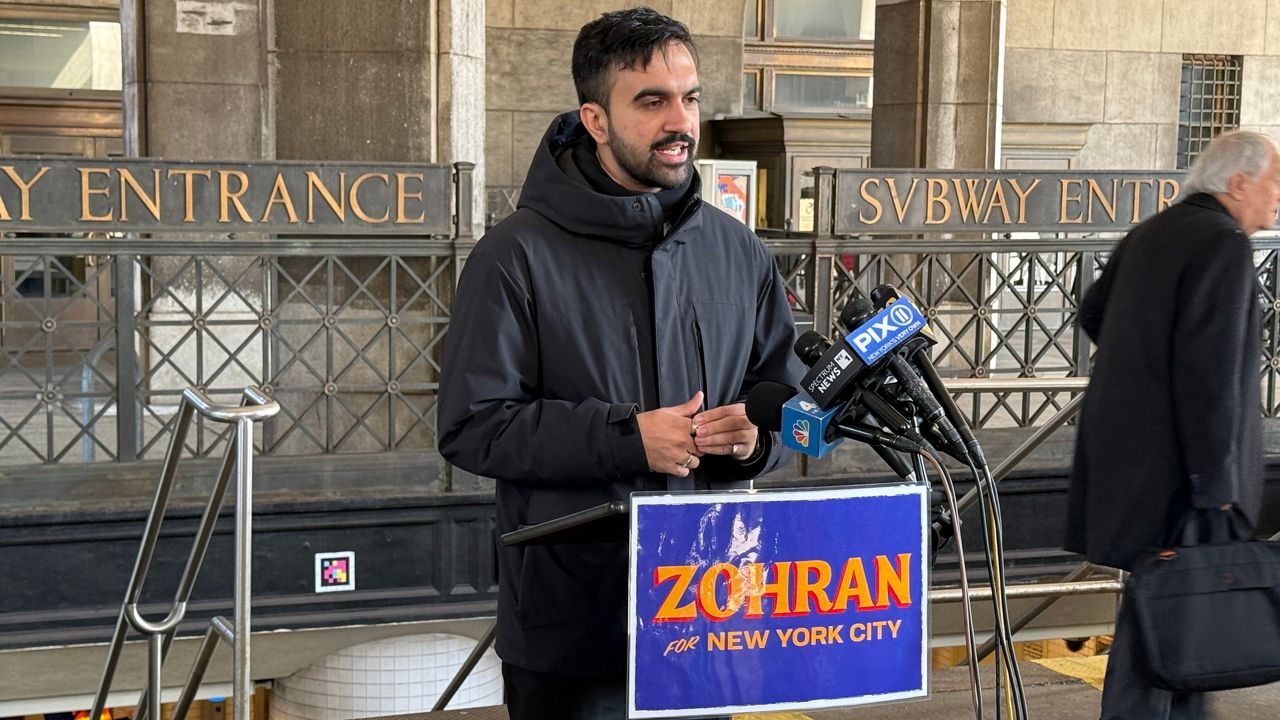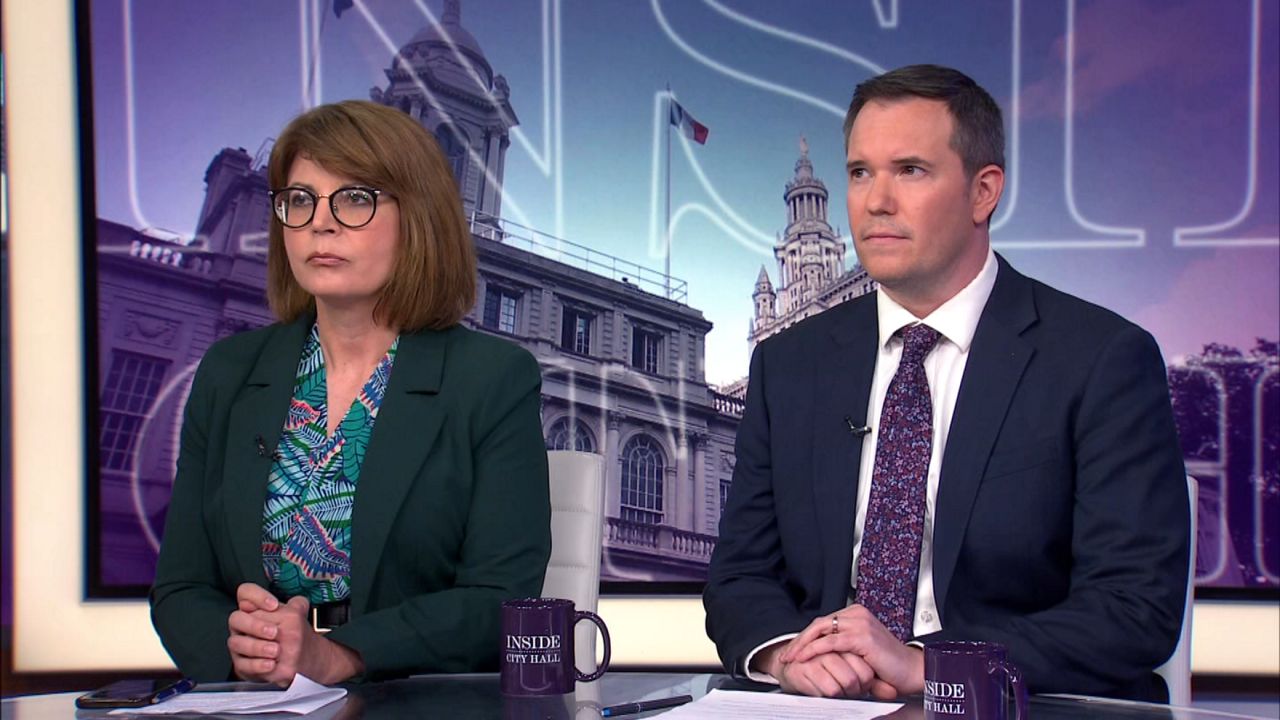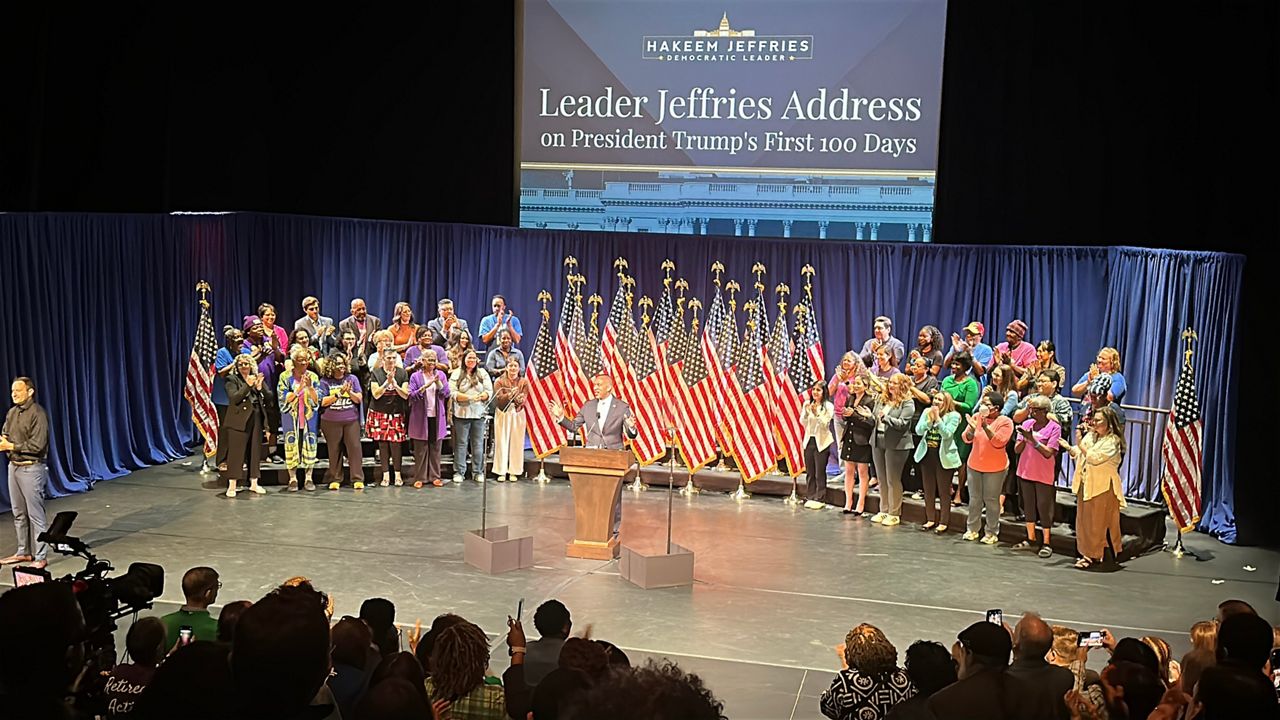“Hi, are you doomscrolling?”
“Hi, are you slouching? Pull your spine up, roll your shoulders back, and go get a big glass of water.”
“Hi, are you tensing your shoulders? Try to lower them back down.”
When Karen Ho first started tweeting these reminders shortly after the pandemic began in 2020, she was mainly speaking to herself.
“I did not expect that a lot of other people would be drawn to the consistency in which I was sending out those messages,” Ho said.
She tweeted out self-care reminders every day between 11 p.m. and 1 a.m., and the consistency of her messages on a platform that is normally known for toxicity and as a playground for online harassment has made an impact.
“I get a lot of doctors who follow me, a lot of other health reporters and science reporters — people from around the world who say, ‘When I log on, your doomscrolling reminder is the first thing that comes up on my phone.’ ”
The reminders from Ho, a business reporter based in Harlem, to do seemingly basic tasks that many people were struggling with even got picked up by outlets like NPR, Business Insider, The Scientific American and more.
But this past March, when a man in Atlanta killed eight people across three spas, including six women of Asian descent, Ho wasn’t sure what to tweet.
“I didn't know how to write the reminder because I was just so speechless at what had happened,” she said.
The COVID-19 pandemic has created a national mental health crisis, according to the American Psychological Association, which has been monitoring stress in the U.S. since 2007.
But the stress of living more than a year under various forms of lockdown has taken on a new meaning for Black, Indigenous, People of Color (BIPOC) who have also had to experience and witness police killings, hate crimes and an overall disproportionate impact of the coronavirus.
“As a BIPOC person, lack of safety is something that we deal with on an everyday basis. Lack of resources is something that we deal with on a daily basis,” said Dr. Akua Boateng, a licensed psychotherapist who specializes in anxiety, depression and mood disorders. “We are often living in survival mode. That has a cascading effect on our physiological health, our emotional health and our ability to see our future in a way that is safe and sound.”
That domino effect takes a heavy toll throughout the course of a person’s lifetime and can even get passed on through generations.
When news broke about the killing of Daunte Wright, a Black man shot and killed by police in Minnesota this month, Tyler McNeely struggled with his normal routine.
“It's hard because you have to still get up, do your daily routine and go to work,” said McNeely, 30, a financial analyst based in Bushwick. “It was really hard to log on and do my normal job, just thinking about all this stuff. My mental health is definitely impacted by all that's going on.”
Some people of color say it’s hard to distinguish the root cause of the stress because the triggers are enmeshed.
“There is no real way to separate police brutality from the disproportionate impact of COVID from, you know, hate crimes. All of these things are together,” said Aria Velasquez, 29, a graduate student at the City University of New York.
Though the warmer weather that spring brings to the city could provide opportunities to engage in activities that could serve as a balm for stress, it’s not an all-powerful antidote.
“It's getting nice outside and so it's, like, ‘Oh, this is probably the perfect opportunity to go out and try to live a little bit,’” said Velasquez, who lives in Flatbush. “But I just don't want to. Getting off of the couch is a chore. Getting out of bed is a chore.”
And while racism has been around much longer than the COVID-19 virus, the pandemic has made the feeling of burnout more pronounced for many people experiencing it.
“A lot of psychological impact happens as a result of having to deal with higher levels of stress, microaggressions at work, that lack of safety, again, and lack of resources,” said Dr. Boateng. “But there's also a physiological impact. The body is taking in all of these stresses, weakening the immune system and having more difficulty with resilience, physiologically.”
As stressors build upon each other, the outlets people typically rely on become increasingly unavailable after more than a year of a global pandemic.
“The coping mechanisms that we use to create some space between what our stressors are and what our relief is don't really exist anymore,” said Velasquez, who said she has been “living on Zoom” for more than a year now. “There is no ‘I am leaving work to go home.’ It is: ‘I am closing out of my class Zoom window to then open up another browser window to get the homework done.’ There is no ability to really move away from it because that journey from the couch to your bedroom or from your kitchen to your bathroom? That's a distance of, like, 30 steps.”
And though the pandemic has significantly changed the remote work model for those in a position to do so, there are still drawbacks when it’s the only option available.
“I have a lot more control of my day-to-day life,” said Jessica Cheung, 24, who lives in the Bedford-Stuyvesant neighborhood of Brooklyn. “But because I have more control of it, I feel like I am constantly trying to multitask or trying to get things done. And that's just a vicious cycle.”
Compounding the issue of burnout for marginalized communities is that many are less likely or unable to access resources — even during non-pandemic times.
“If you are a Black, brown, Asian or another New Yorker of color, you are more likely to find yourself living in a mental health care desert,” said Councilwoman Farah Louis at an April 6 City Council hearing.
Louis, the chair of the Committee on Mental Health, Disabilities and Addictions, said the number of residents who need mental health services surpasses available providers in certain neighborhoods. And many mental health providers do not accept insurance, she said.
For those that do accept private insurance, only 71% accept Medicaid and 85% accept Medicare. Most Bronx residents are insured by Medicaid and are thus considered living in a mental health desert, the councilwoman said.
Whether it’s this inaccessibility of care, a lack of culturally competent providers, or a stigma against seeking help, many BIPOC experience disparate mental health outcomes than their white counterparts.
Ho, the business reporter from Harlem, said her stress level went down knowing she had access to health care when she went from freelancing to a full-time staff position in 2020.
“Marginalized groups go through burnout and aren't allowed this space to think about it a lot because we're just constantly working,” said Ho, who also reports on this topic. “The thing that's really, really difficult is that through economic circumstances, often we're not allowed the time or the resources to recover and really acknowledge it.”
For example, Asians are disproportionately represented in public-facing businesses, including restaurants, hotels and stores, according to a Quartz analysis. This type of work does not easily translate to remote work, if at all, creating precarious labor conditions both financially and physically.
And those who are able to continue working often face family obligations that keep them from considering other options like taking time off.
“Personally, I don't think I could do that,” said Cheung, 24, who has been working since high school. “It's me and my siblings who are supporting my dad. I've had a lot of financial insecurity [growing up].”
Recognition of a need to overcome obstacles to mental health resources has reached a greater urgency this past year, experts say.
“There is a movement of refusing to not have peace and joy and the resources that we need,” Boateng said. “So many barriers are being broken. They're being taken down day by day. Even though it is hard to access and get resources, there are people that look like you that are here to support you.”
The Loveland Foundation, Therapy for Black Girls and The Cosmos are among a few organizations that offer free therapy or financial assistance for women of color to access therapy.
As tough as this past year has been, New Yorkers like Ho want to give back.
She is still tweeting her mental health reminders daily. After receiving the first dose of the COVID-19 vaccine, she’s been helping others set up their own appointments.
“I'm definitely of the mindset of ‘oxygen mask first’ in a time of crisis,” Ho said. “Now that I have the oxygen mask on, I am looking around me and seeing who else I can help to get that oxygen mask on for themselves as well.”




